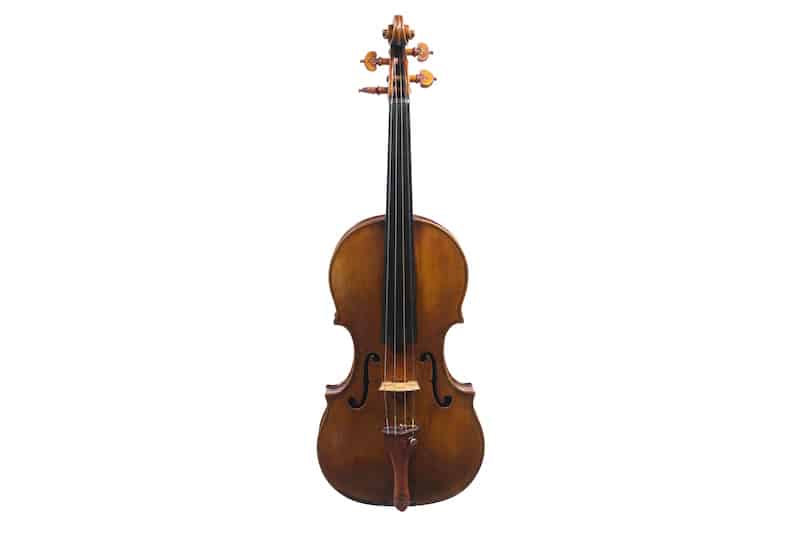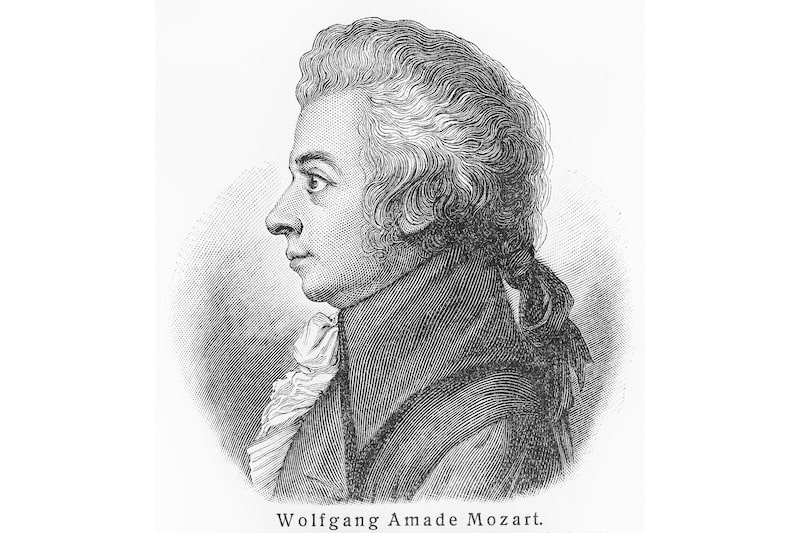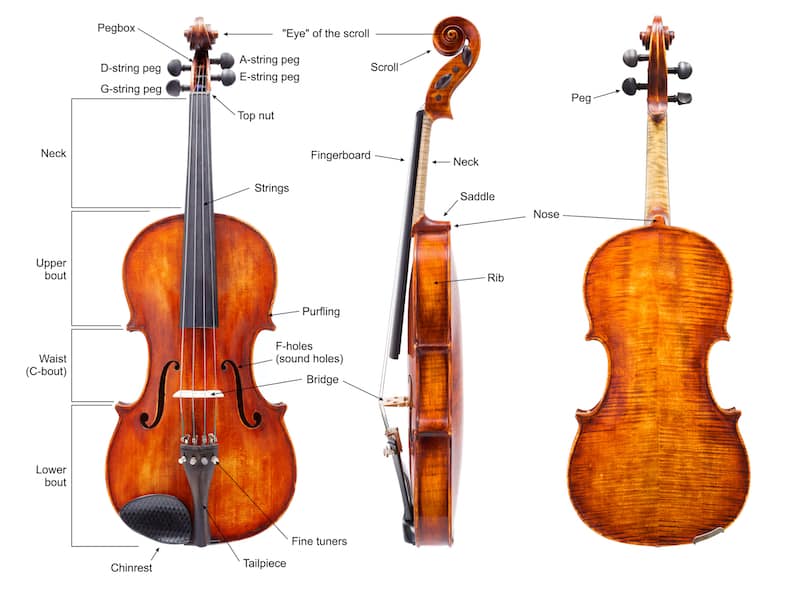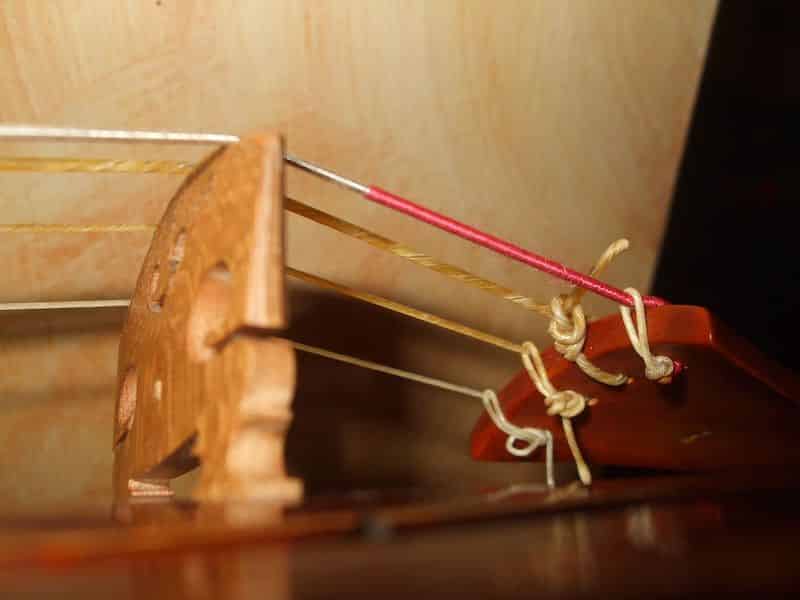The violin is one of the most beloved and remarkable instruments in the world. Dating back to the 1500s, there’s so much to learn about this stringed instrument
For instance, did you know that the oldest surviving violin is over 400 years old? Or that violin strings were once crafted from dried sheep guts, a practice that might sound surprising today?
So if you’re curious to learn more about this extraordinary instrument, stick around! We’ve compiled 10 fun and interesting facts about the violin that are sure to spark your interest. Let’s dive in!
1. The Violin Is Almost 500 Years Old

The violin has a long history. Its beautiful design comes from Andrea Amati, who started making violins in the 1500s. His work set the standard for violin-making and inspired others, including the famous Antonio Stradivari.
The oldest violin we have today is based on Amati’s design and is from 1560. Paintings from the Renaissance show earlier stringed instruments, like the rebec and Renaissance violin, which influenced Amati’s design.
Although the violin hasn’t changed much since Amati, his contemporary Antonio Stradivari made some of the most famous violins ever, known as Stradivarius.
2. Violins Can Get Very Expensive
The most expensive violin in the world dates back to 1741, made by luthier Giuseppe Guarneri and played by Belgian virtuoso Henry Vieuxtemps.
It is named the Vieuxtemps Guarneri after these two men and has been valued at a whopping $18 million (£10.5 million)!
It was anonymously donated to famous American violinist Anne Akiko Meyers and loaned to her in perpetuity. She debuted this impressive instrument by recording Vivaldi’s Four Seasons.
3. Violins Are Named After Cows
The word violin originates from the Latin word vitula, which translates into “calf” or “cow.” This may have referred to the fact that dried animal guts (sheep and cow) were used to create the strings of the instrument.
However, the word vitula also has connotations with Sabine Vitula, the Roman goddess of joy and victory, which is certainly a more pleasant association.
4. Violin Strings Aren’t Always Vegan
Incredible though it seems now, violin strings were originally made from dried animal intestines!
The common use of intestines or guts (where the term gut strings comes from) can be dated back to Ancient Egypt after hieroglyphs were discovered detailing the production of dried gut.
This only changed after the Second World War, when alternative materials — such as aluminum, steel, silver, and chrome were used to coat synthetic strings — although you can still get real gut strings today.
These mimicked the rich-sounding timbre of the gut strings, while the metal coating increased their durability.
5. Playing The Violin Is A Workout
According to a research study, playing the violin burns around 170 calories per hour. This is equivalent to two glasses of wine or 20% of a Big Mac (with cheese) from McDonalds.
While playing the violin might not be intense exercise, it does use a lot of energy since your upper body is actively engaged. Imagine how many calories you’d burn during a full day of orchestra rehearsals!
6. Mozart Was An Accomplished Violinist

Although Mozart was famously an outstanding Classical Period composer and pianist, he was also an accomplished violinist and performed to a high standard.
Mozart’s father, also a highly skilled violinist, was involved in his musical education and brought Mozart along to his own performances around Europe.
Mozart performed concerts on the violin and composed technically advanced pieces using his knowledge of the instrument.
Additionally, he learned how to play the viola and is often celebrated for making viola parts more interesting and dominant than they might typically be.
7. Violinists Used To Be Conductors
The first violinist in an orchestra used to act as a conductor or concertmaster until the role of the conductor became established in the 1900s.
The lead violinist would direct musicians from their seats at the front or from a standing position. This gradually changed as orchestras got larger, and there were increasing numbers of musicians to direct.
Conducting and playing violin parts perfectly was very challenging, so a separate role was created for the first violinist to focus solely on performing music.
8. A Fiddle Is Just A Violin
Many people think the violin and fiddle are different types of violins, but they’re actually the same. The main difference is in the style of music and how they’re played.
The fiddle is often used in folk music and has a more relaxed style compared to the classical violin, which is used in orchestras and chamber music. Fiddles might have a slightly flatter bridge to make playing two strings at once easier, a common feature in folk music.
Even though the violin and fiddle are designed the same, they are played differently. Folk music uses a looser bow technique, while classical music requires more controlled movements and a cleaner sound.
9. The Violin Is Made Up Of 81 Pieces

Violins are notoriously complicated to make and materials must be sourced from specialist suppliers.
They are made with up to 81 different pieces of wood, not counting any extra pieces if they have been repaired.
A typical violin uses a variety of woods, including maple, spruce, and ebony, and may incorporate rosewood and boxwood too.
Making a violin is a lengthy process, taking over 10 weeks to complete the building, tanning, and varnishing processes.
Becoming a luthier requires special training and often three years of learning before starting their professional career.
10. One Violinist Has An Interesting Story
Fritz Kreisler, one of the world’s most famous violinists, took a break from his rising career to serve as a captain in World War I. Even though he was on the front lines, his musical skills were still useful.
He wrote about how he could figure out where artillery shells were fired from by listening to the sounds they made as they traveled through the air. He was even given a special mission. Thanks to his sharp ear, he successfully calculated the range and location of Russian artillery.
Summing Up Our Facts About The Violin
That’s it for the most interesting facts about the violin!
We hope you have learned something new about this fascinating instrument and that it has renewed your appreciation for the modern invention of synthetic strings!
Remember that an extra hour of practice will certainly justify having that second helping of dessert or a glass of wine!

